Watch how Collecting honey and Canning
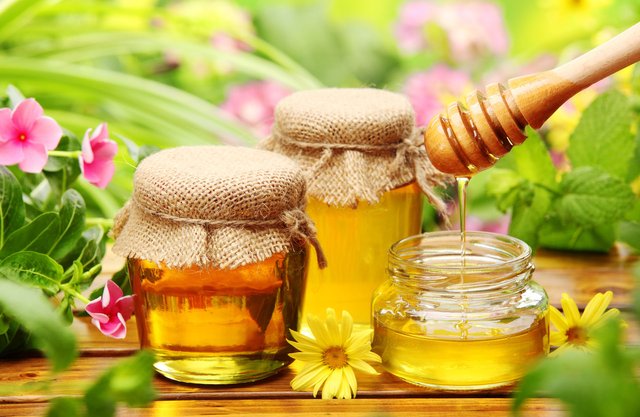
the honey was discovered in 2100 BC by the Sumerians, Babylonians, and Mormons, as found in many ancient writings, scriptures, and in many different eras and countries such as India and Egypt, as was observed on paintings in a cave in Spain, Which dates back to 7000 BC.
Honey is defined as a substance produced by bees after its collection of the nectar of flowers spread in many areas. The types of nectar vary in taste, taste and smell. , Amino acids, and yeast, which increased its nutritional and therapeutic value, so in this article we will inform you of its benefits.
.Bees, these indispensable insects
The bee, or the workmen very precisely, forage the nectar of the flowers that they will store in their crop. According to the plant, the sugar level will differ but also the color, thanks to the percentage of pigments present in the nectar, the aromas and the vitamins. Once loaded, the bees bring him back to the hive where other workers will take over. These will load the valuable nectar into enzymes. They will modify the composition of the future honey by acting on the sugar.
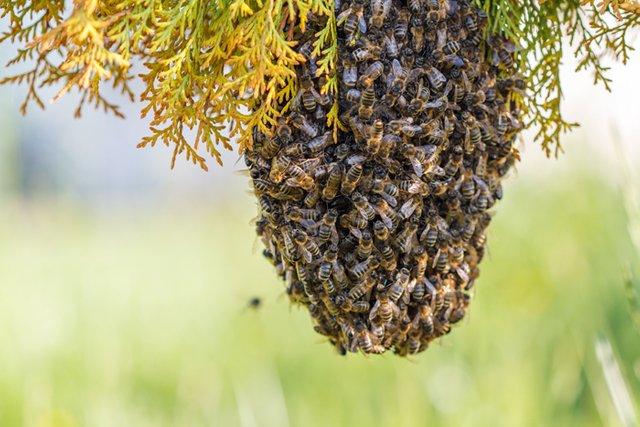
The workers then swallow and regurgitate the nectar several times and then spread it out in the alveoli provided for this purpose. They will let it dry because it still contains water (about 50%). Then the temperature of the hive will rise to 30 ° C thanks to the action of the bees who will try to remove the water still present. The drying time varies, depending on the water content in the honey. After maturation, this liquid gold contains a maximum of 18% of water. The cells will then be closed to be totally impermeable.
.Types of honey
-Monofloral honey
This honey category has a particular taste that evokes the flower from which each one comes.
Acacia honey, for example, is a blond and liquid honey with a delicate flavor that does not denature tea and which, in addition to promoting intestinal transit, is not contraindicated in people with diabetes.
Chestnut honey, on the other hand, is a very liquid dark honey with an extremely powerful aroma and taste. It has properties that make it an excellent remounting and toning for the veins.
Rosemary honey, known to be beneficial to the liver and its stimulating properties, is yellowish with a fruity flavor. It is also a good ally for winter.
The honey of lavender is a clear honey when it is liquid but which crystallizes rather quickly and then becomes whitish. Very aromatic, it also has a positive effect on cardiac and respiratory disorders.
Heather honey, brown and strong in taste is an anti-anemic very well known and antiseptic.
Other honey, including honey from oak, eucalyptus and rapeseed, are also endowed with their own tastes and specific properties.
-Polyfloral honeys
Other appellations of honeys are derived from their mode of cultivation. For example, some honeys called "mountain honey" come from grassland flowers at high altitude and thus hold the properties of several plants but also pronounced flavors. The color of this honey can range from brown to whitish depending on the concentrations of honeydew honey and boxwood in the region. The term "honey all flowers" refers to a honey harvested at the end of each season and whose cultivation has spread over several flowering periods. Its taste reflects the flowers of all the territory from which it comes.
As the name suggests, spring and summer honeys are obtained from flowering in these seasons. The first is clear and has a delicate smell coming from various trees, flowers of boxwood and acacia or linden. The second comes from several flowers that flourish in summer including lavender, sunflower or honeysuckle.
-Popular honeys
The honey market is in constant progression. Indeed, changes in agriculture have led to the gradual disappearance of clover, sainfoin and alfalfa, which were once very popular. With time and the introduction of other varieties and flavors coming from the countries of the world, one is initiated to other cultures.
From madagaskar, new zealand, usa, for example, arbutus honey is renowned for its slight bitterness and is highly appreciated by gourmets. When it arrived on the market in the last decade, the honey of metcalfa, a sweet and fruity brown honey is mainly cultivated in the Mediterranean. Fir honey is a honey of dark color, even blackish, very demanded because of its very sweet taste
-The harvest:
When temperatures are mild, the flowers will be numerous and the harvest can take place up to twice a year. This is usually done during the summer. It is the frames of the rise (upper part of the hive) that will be taken. The frames of the lower body, larger, serve as a reserve for bees during the winter.
Before extracting the rising frames the beekeeper will have to report his presence to the bees by smoking them. This method also allows them to calm them down and be less aggressive. The beekeeper will then have to remove the roof and gently remove the frames that can be retained by the amalgam of propolis. Honey must be present ¾ on each side of frame. A few years ago, it was not surprising to recover several tens of kilo of honey per hive (sometimes up to 50kg!). Climate change, phytosanitary products and diseases have considerably reduced harvests by between 8 and 17 kg per hive on average.
-uncapping
Once brought back to the honeydew, frames filled with honey will be uncapped. That is, the layer of wax that closes the cells will be removed to release the honey. To do this, a knife or a harrow to uncurl will allow to precisely cut the thin layer of wax above the alveoli.
-extracting
Once the honeycombs are opened, it will be necessary to remove the honey from the frames. This is where the second machine comes in: the extractor. It is a tank which can contain some rising frames. These will be installed in it and, once the lid is closed, the crank that will rotate them will be actuated. The centrifugal force will allow the honey to be extracted and propelled into the tank.
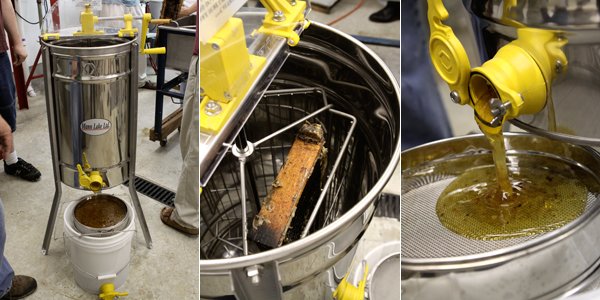

-Filtering
Once all the frames are empty, it can be seen that the honey contained in the tank contains many impurities, notably wax. It will then have to be filtered in a kind of large screen to purify it.
-Ripening
After filtration, the honey is usually packed in large barrels. The professional or the amateur will leave this precious liquid to rest several days (a little less than a week in general for the most pressed) at a temperature near the 20 ° C. The heat, too low, will not destroy any property of the honey, but will nevertheless allow it to remain liquid. Following this maturation, foam was formed on the surface. It will then have to be removed. It is not harmful, but it is not very aesthetic and tasty.
-Conditioning
The honey is finally ready for marketing and consumption.
Honey is a living matter. Many people attribute a degradation in the quality of honey when it crystallizes. It is not so ! This phenomenon is entirely dependent on the nectar harvested by the bees. In fact, the more fructose a honey contains, the less it will crystallize (clover honey). Some nectars contain little of this sugar, they will crystallize very quickly. In the long term, you can have a liquid honey, creamy or rather hard, but this is not a sign of bad conditioning.
Watch how honey is collected in this video
source: photo by pixabay and Google
source: http://www.instructables.com/id/Harvesting-and-Canning-Honey-the-Crush-and-Strain-/







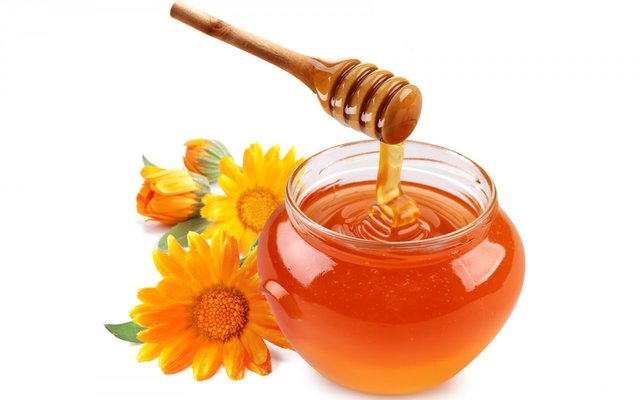


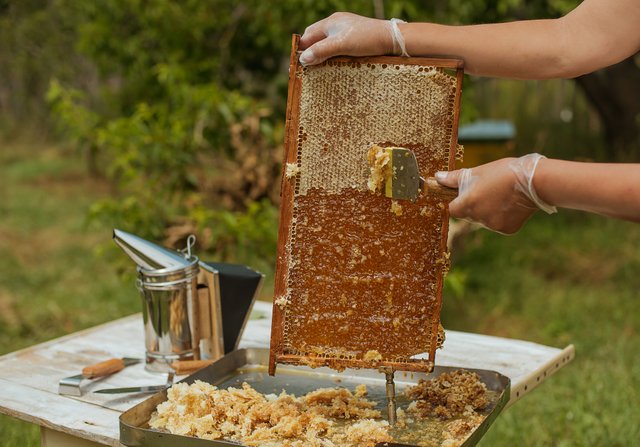

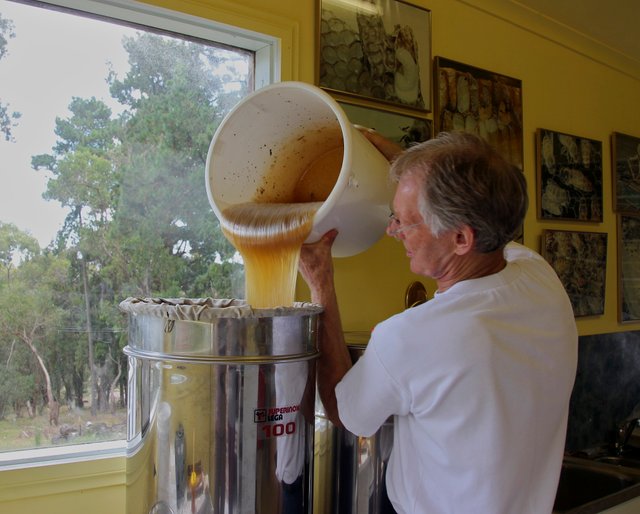
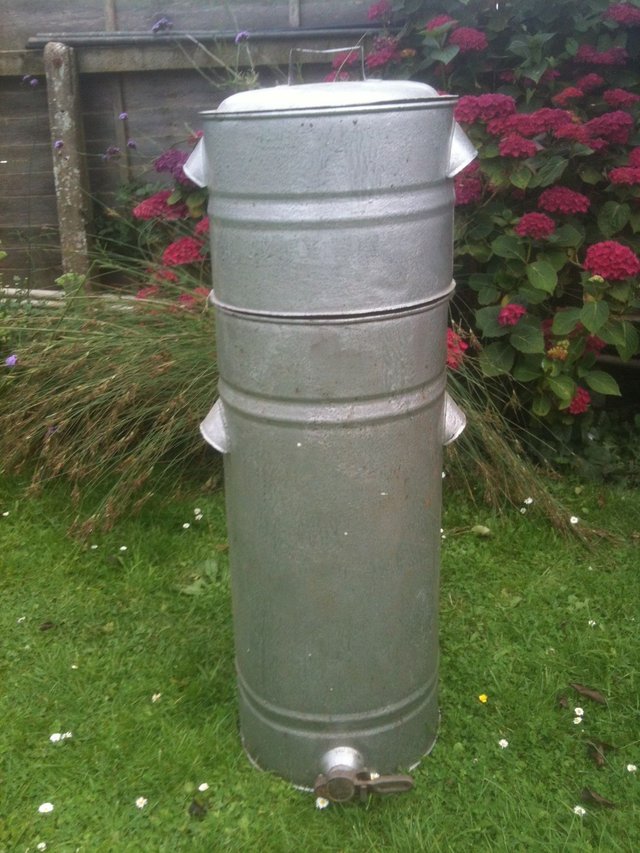
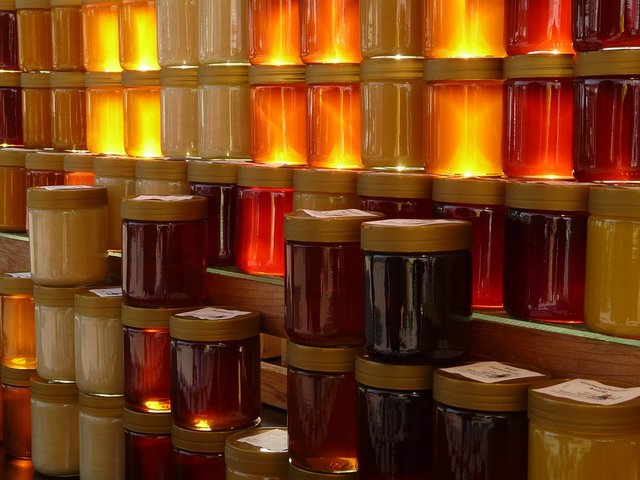
@cmtzco has voted on behalf of @minnowpond. If you would like to recieve upvotes from minnowpond on all your posts, simply FOLLOW @minnowpond. To be Resteemed to 4k+ followers and upvoted heavier send 0.25SBD to @minnowpond with your posts url as the memo
This post has received a 2.20 % upvote from thanks to: @aek081969.
thanks to: @aek081969.
For more information, click here!
I can't have a hive where I live, so I really enjoy posts like this that show me what I'm missing :-)
Cool, I never knew about the ripening step. Great informational article. If only I had the time to start the hobby...
Great job! Steemit Community Quality Support is happy support your original and quality post, this brings benefit to Steemit, so it was chosen to be upvote! Thank you for sharing, keep it up!
I love honey
very nice post thanks
good